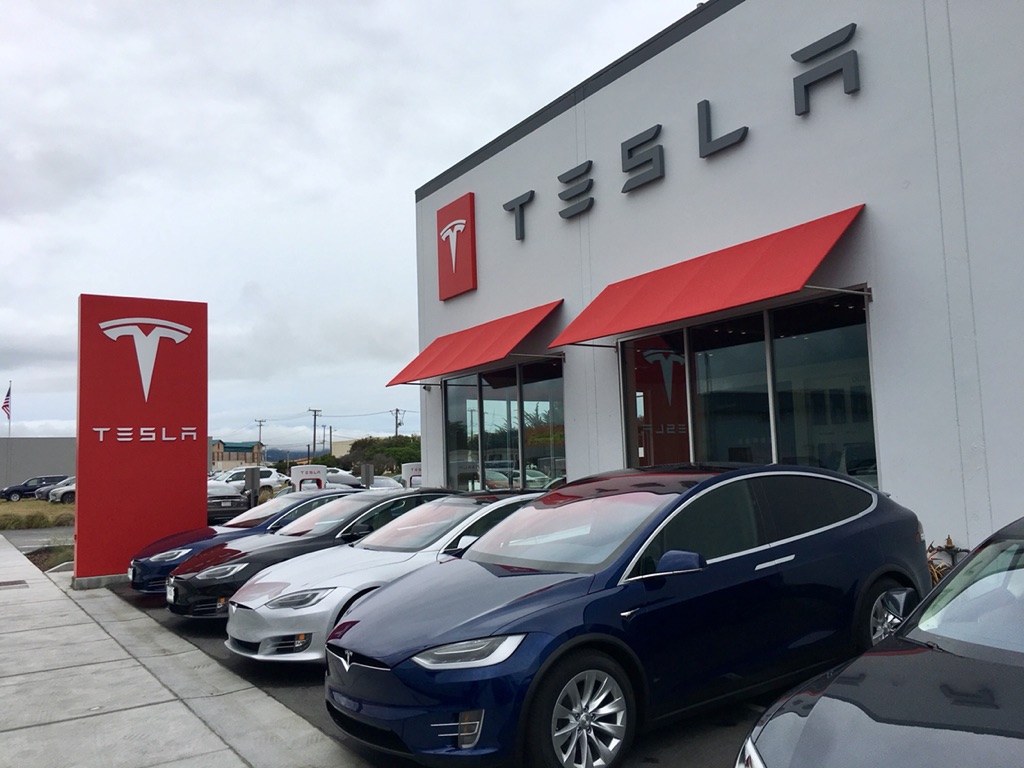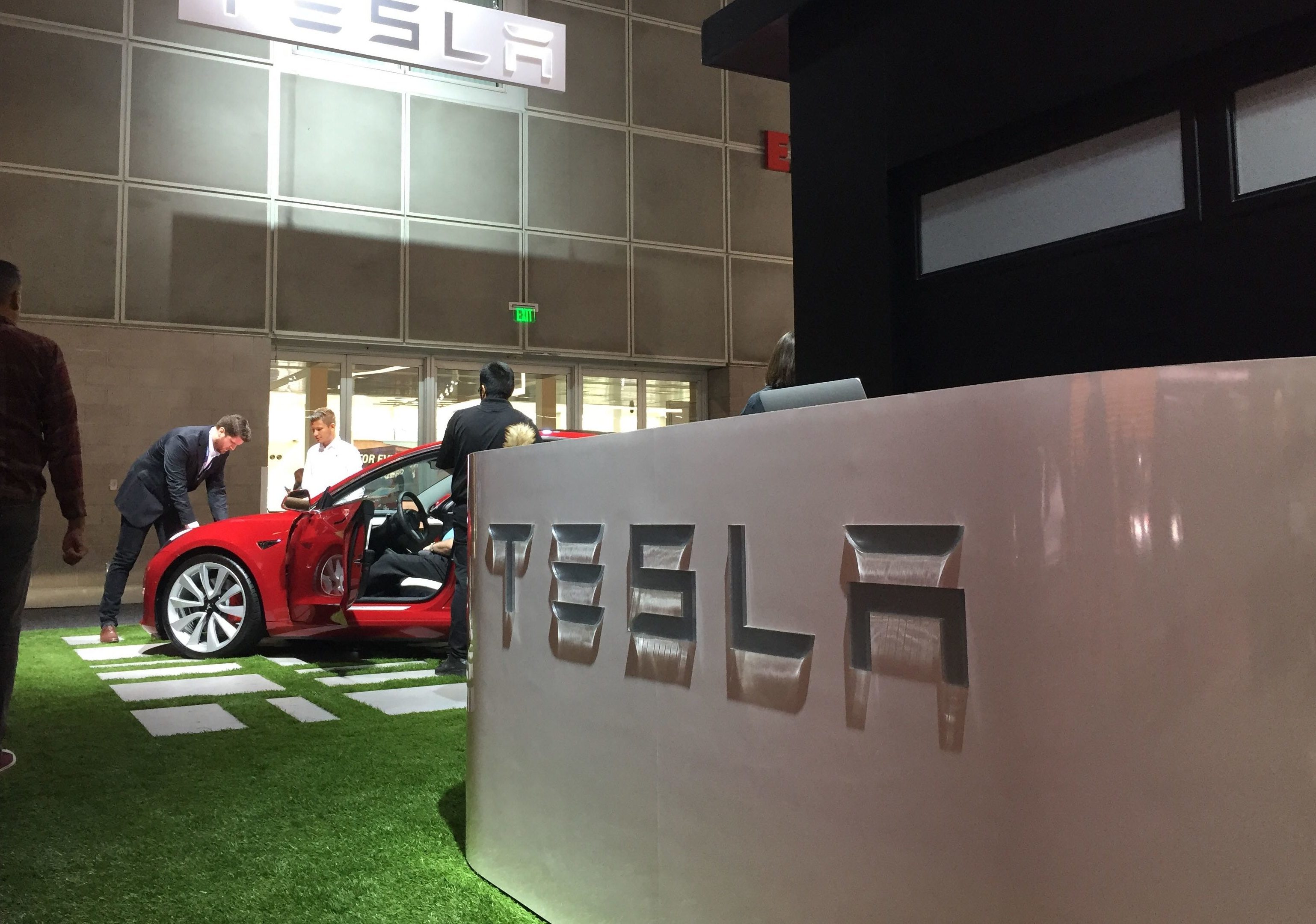

News
Tesla had “Faraday” as a backup name before buying “Tesla Motors” trademark for $75k
In a few informative tweets on Saturday evening, Tesla co-founder and CEO Elon Musk revealed some trivia about the company’s naming history: “Faraday” was the alternative name proposed for the electric vehicle manufacturer before “Tesla Motors” was purchased for $75,000. A man named Brad Siewert had filed for the mark in 1994 and maintained its registration until the sale to Musk’s company was made in 2004.
While Musk has expressed admiration for the body of work produced by the famed Serbian-American inventor who would usher in an era of AC induction motors, Nikola Tesla, Musk’s use of the name “Tesla” for an electric car company wasn’t immediately feasible. Due to trademark roadblocks in the US, Europe, and China, registering the simpler “Tesla” name was precluded thanks to ownership by others in those countries. Interestingly enough, however, Tesla Motors, Inc. changed its name to simply Tesla, Inc. in February of 2017.
Tesla history trivia: we didn’t actually come up with the Tesla Motors name. Bought trademark off Brad Siewert for $75k in late 2004. He’d originally filed for it in 1994. Our alternative name was Faraday, which was used by a competitor several years later. https://t.co/zPnrrVash1
— Elon Musk (@elonmusk) December 9, 2018
The trivia revelation was in response to a short clip from a recent 60 Minutes interview with the business magnate. An extended clip provided on CBS News also revealed that prior owner Siewert didn’t want to sell the trademark to the vehicle manufacturer, so Musk sent “the nicest guy in our company” to sit on the doorstep until he agreed to make the sale. Obviously, the charming fellow was convincing enough to be successful in his endeavor, although the price tag drove a tough bargain at the time.
It’s tough to imagine this name any differently now.

In the shorter video clip posted with Musk’s original tweet about the trademark purchase, he lightheartedly debated about the correct pronunciation of the electric vehicle company’s name with host Lesley Stahl. He seemed to prefer his “z” sound for Tesla’s “s”, and she preferred the softer “s” version. Other clips provided from the same interview were released previously, one notably airing Musk’s consideration of a GM factory purchase in response to that company’s recent announcement of closures.
Also revealed in subsequent tweets was Musk’s lack of enthusiasm for the TeslaMotors.com website domain, citing an arduous $11 million dollar process lasting over ten years to acquire Tesla.com. A quick search for “Tesla” in the US trademark database alone reveals hundreds of goods and services paying tribute to the scientific genius of Nikola Tesla. With the mark tied into so many products and services, the wonder isn’t why someone would hold onto the domain name, but rather why the specific domain was such an issue given the car company’s market presence. Perhaps, it was simply the principle of the matter.
Buying https://t.co/46TXqRrsdr took over a decade, $11M & amazing amount of effort. Didn’t like https://t.co/BsRfMrY9Gm even when we were only making 🚘.
— Elon Musk (@elonmusk) December 9, 2018
Tesla was founded in 2003 with the purpose of shifting the public’s perception of electric cars and kick-starting a revolution in clean energy vehicles. The Roadster, Tesla’s first vehicle unveiled in 2008, struggled with production demands and reliability, but it found enough popularity to move electric cars out of the “golf cart” status they’d been relegated to and provide the fledgling startup with the tools needed to take the next steps.
Today, the company boasts three other successful models with electric semi-trucks on the way and a 2nd generation Roadster scheduled to begin production in 2020. The original Roadster was famous aboard SpaceX’s Falcon Heavy demo launch with a spacesuit-outfitted “driver” named Starman in the front seat. That vehicle is currently floating over 200 million miles away from Earth.
Brad Siewert now owns the trademark for “Drone Delivery Butler” which was registered in 2017. Perhaps he’s on to something that will be worth another $75,000 once the concept catches on in about ten years, the approximate time Tesla Motors spent under his stewardship. Then again, the name of one of the most famous butlers in pop culture exists in the Iron Man story, a franchise that Musk has already claimed as the “real life” Tony Stark. Jarvis Neural Networks, anyone?

News
Tesla FSD fleet is nearing 7 billion total miles, including 2.5 billion city miles
As can be seen on Tesla’s official FSD webpage, vehicles equipped with the system have now navigated over 6.99 billion miles.

Tesla’s Full Self-Driving (Supervised) fleet is closing in on almost 7 billion total miles driven, as per data posted by the company on its official FSD webpage.
These figures hint at the massive scale of data fueling Tesla’s rapid FSD improvements, which have been quite notable as of late.
FSD mileage milestones
As can be seen on Tesla’s official FSD webpage, vehicles equipped with the system have now navigated over 6.99 billion miles. Tesla owner and avid FSD tester Whole Mars Catalog also shared a screenshot indicating that from the nearly 7 billion miles traveled by the FSD fleet, more than 2.5 billion miles were driven inside cities.
City miles are particularly valuable for complex urban scenarios like unprotected turns, pedestrian interactions, and traffic lights. This is also the difference-maker for FSD, as only complex solutions, such as Waymo’s self-driving taxis, operate similarly on inner-city streets. And even then, incidents such as the San Francisco blackouts have proven challenging for sensor-rich vehicles like Waymos.
Tesla’s data edge
Tesla has a number of advantages in the autonomous vehicle sector, one of which is the size of its fleet and the number of vehicles training FSD on real-world roads. Tesla’s nearly 7 billion FSD miles then allow the company to roll out updates that make its vehicles behave like they are being driven by experienced drivers, even if they are operating on their own.
So notable are Tesla’s improvements to FSD that NVIDIA Director of Robotics Jim Fan, after experiencing FSD v14, noted that the system is the first AI that passes what he described as a “Physical Turing Test.”
“Despite knowing exactly how robot learning works, I still find it magical watching the steering wheel turn by itself. First it feels surreal, next it becomes routine. Then, like the smartphone, taking it away actively hurts. This is how humanity gets rewired and glued to god-like technologies,” Fan wrote in a post on X.
News
Tesla starts showing how FSD will change lives in Europe
Local officials tested the system on narrow country roads and were impressed by FSD’s smooth, human-like driving, with some calling the service a game-changer for everyday life in areas that are far from urban centers.

Tesla has launched Europe’s first public shuttle service using Full Self-Driving (Supervised) in the rural Eifelkreis Bitburg-Prüm region of Germany, demonstrating how the technology can restore independence and mobility for people who struggle with limited transport options.
Local officials tested the system on narrow country roads and were impressed by FSD’s smooth, human-like driving, with some calling the service a game-changer for everyday life in areas that are far from urban centers.
Officials see real impact on rural residents
Arzfeld Mayor Johannes Kuhl and District Administrator Andreas Kruppert personally tested the Tesla shuttle service. This allowed them to see just how well FSD navigated winding lanes and rural roads confidently. Kruppert said, “Autonomous driving sounds like science fiction to many, but we simply see here that it works totally well in rural regions too.” Kuhl, for his part, also noted that FSD “feels like a very experienced driver.”
The pilot complements the area’s “Citizen Bus” program, which provides on-demand rides for elderly residents who can no longer drive themselves. Tesla Europe shared a video of a demonstration of the service, highlighting how FSD gives people their freedom back, even in places where public transport is not as prevalent.
What the Ministry for Economic Affairs and Transport says
Rhineland-Palatinate’s Minister Daniela Schmitt supported the project, praising the collaboration that made this “first of its kind in Europe” possible. As per the ministry, the rural rollout for the service shows FSD’s potential beyond major cities, and it delivers tangible benefits like grocery runs, doctor visits, and social connections for isolated residents.
“Reliable and flexible mobility is especially vital in rural areas. With the launch of a shuttle service using self-driving vehicles (FSD supervised) by Tesla in the Eifelkreis Bitburg-Prüm, an innovative pilot project is now getting underway that complements local community bus services. It is the first project of its kind in Europe.
“The result is a real gain for rural mobility: greater accessibility, more flexibility and tangible benefits for everyday life. A strong signal for innovation, cooperation and future-oriented mobility beyond urban centers,” the ministry wrote in a LinkedIn post.
News
Tesla China quietly posts Robotaxi-related job listing
Tesla China is currently seeking a Low Voltage Electrical Engineer to work on circuit board design for the company’s autonomous vehicles.

Tesla has posted a new job listing in Shanghai explicitly tied to its Robotaxi program, fueling speculation that the company is preparing to launch its dedicated autonomous ride-hailing service in China.
As noted in the listing, Tesla China is currently seeking a Low Voltage Electrical Engineer to work on circuit board design for the company’s autonomous vehicles.
Robotaxi-specific role
The listing, which was shared on social media platform X by industry watcher @tslaming, suggested that Tesla China is looking to fill the role urgently. The job listing itself specifically mentions that the person hired for the role will be working on the Low Voltage Hardware team, which would design the circuit boards that would serve as the nervous system of the Robotaxi.
Key tasks for the role, as indicated in the job listing, include collaboration with PCB layout, firmware, mechanical, program management, and validation teams, among other responsibilities. The role is based in Shanghai.
China Robotaxi launch
China represents a massive potential market for robotaxis, with its dense urban centers and supportive policies in select cities. Tesla has limited permission to roll out FSD in the country, though despite this, its vehicles have been hailed as among the best in the market when it comes to autonomous features. So far, at least, it appears that China supports Tesla’s FSD and Robotaxi rollout.
This was hinted at in November, when Tesla brought the Cybercab to the 8th China International Import Expo (CIIE) in Shanghai, marking the first time that the autonomous two-seater was brought to the Asia-Pacific region. The vehicle, despite not having a release date in China, received a significant amount of interest among the event’s attendees.








